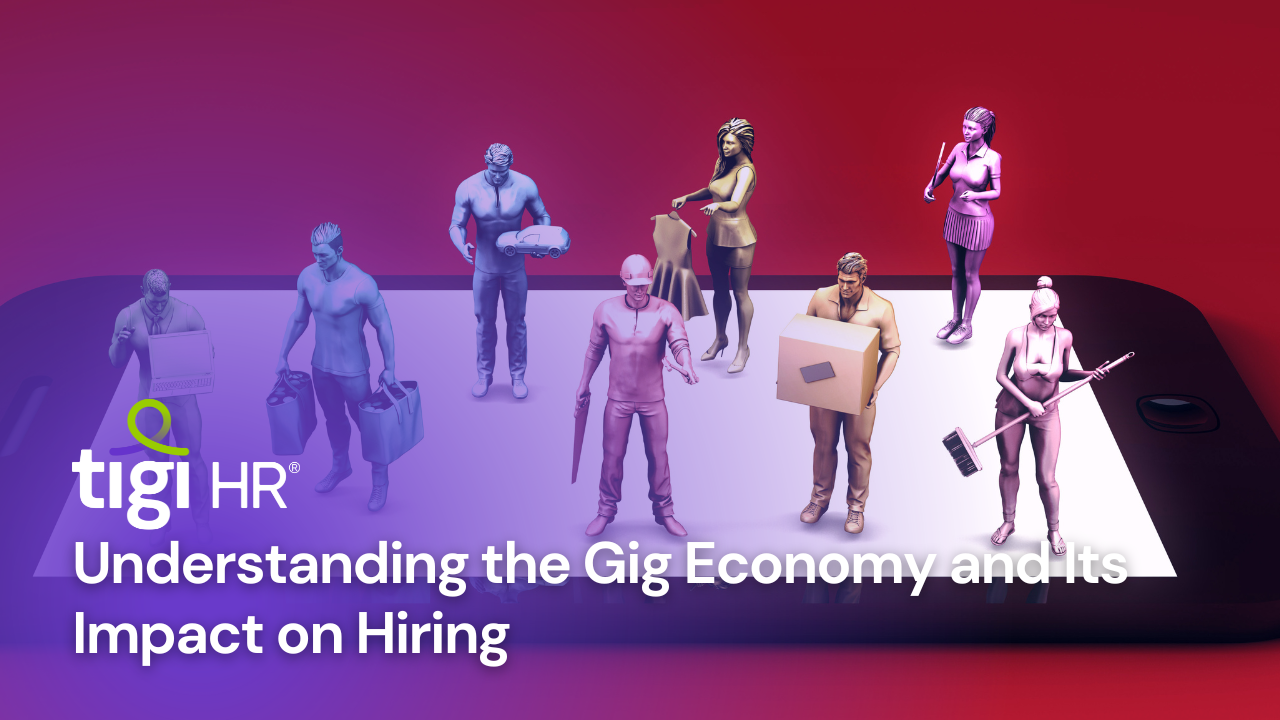Introduction to the Gig Economy
The gig economy, also known as the freelance or on-demand economy, has become a prominent feature of the modern workforce. It represents a significant departure from the traditional 9-to-5 employment model that has long been the norm. In the gig economy, individuals, often referred to as “gig workers” or “freelancers,” engage in short-term, flexible work arrangements. These arrangements can include freelance projects, part-time work, temporary contracts, or even one-time tasks.
One of the defining characteristics of the gig economy is the prevalence of digital platforms and mobile apps that connect gig workers with potential clients or employers. These platforms, such as Uber, Airbnb, Upwork, and TaskRabbit, have streamlined the process of finding and securing gig work, making it easier for people to participate in this type of employment.
The gig economy encompasses a wide range of industries and professions. It includes everything from ride-sharing drivers and food delivery couriers to freelance writers, graphic designers, and software developers. Essentially, almost any service or skill can find a place in the gig economy.
The appeal of the gig economy lies in its flexibility. Gig workers have the freedom to choose when, where, and how they work. This flexibility can be especially attractive to individuals seeking work-life balance, those looking to supplement their income, or professionals pursuing a portfolio career.
However, it’s important to note that the gig economy also raises important questions and challenges. Issues related to job security, benefits, and worker rights have come to the forefront of public discourse. As the gig economy continues to grow and evolve, understanding its various dimensions and implications becomes crucial for workers, employers, policymakers, and society at large. This article will delve deeper into these aspects, shedding light on the multifaceted nature of the gig economy and its impact on the world of hiring.
The gig economy’s history is deeply rooted in the concept of freelance work, which dates back centuries. However, the contemporary gig economy as we know it has evolved significantly over the past few decades.
Historically, the term “gig” referred to a musician’s job or performance engagement. Musicians would take on different gigs, playing at various venues. This concept of short-term, project-based work laid the foundation for the modern gig economy.
The 20th century saw the rise of temporary employment agencies, which provided businesses with short-term workers for specific tasks or projects. This marked a shift away from the traditional model of long-term employment.
The digital revolution of the late 20th century and the early 21st century played a pivotal role in the gig economy’s growth. The internet and the proliferation of mobile technology enabled the creation of online platforms that connected gig workers with clients or employers. Platforms like Upwork (formerly Elance and oDesk) and Airbnb emerged, allowing individuals to offer their services or rent their assets on a temporary basis.
During economic downturns and recessions, the gig economy often experienced significant growth as people sought alternative sources of income. This trend became particularly pronounced during the global financial crisis of 2008, which led to a surge in freelance and gig work.
History of the Gig Economy
The evolution of the gig economy has been shaped not only by technological advancements but also by shifts in societal and economic factors. As more people sought flexibility in their work arrangements, the gig economy gained momentum.
One key turning point was the Great Recession of 2008. The economic downturn prompted many companies to reduce their permanent workforce and rely more on temporary and contract workers to cut costs. This increased demand for gig workers, and many individuals turned to freelancing and gig work out of necessity.
Simultaneously, the rise of sharing economy platforms like Uber and Lyft revolutionized transportation services. These platforms allowed individuals to leverage their own vehicles to provide rides on a part-time or full-time basis, further popularizing gig work. The success of these platforms paved the way for similar models in other sectors, such as food delivery and vacation rentals.
The gig economy’s expansion has also been driven by a shift in how people view work. Many individuals today prioritize flexibility, autonomy, and diverse income streams over traditional job security. This cultural shift, along with the ubiquity of smartphones and internet access, has made gig work increasingly attractive.
While the gig economy offers benefits like flexibility and entrepreneurship opportunities, it has also raised concerns about job security, access to benefits, and worker rights. These issues have prompted debates and discussions at the legislative and societal levels about how to regulate and protect gig workers.
The gig economy’s evolution has been marked by both innovation and adaptation. As it expanded, various sectors and industries began to adopt gig-style work arrangements. Professionals in fields like IT, marketing, and creative services embraced freelancing as a way to capitalize on their specialized skills and serve a global client base.
The emergence of online marketplaces and job boards tailored to freelancers contributed to the gig economy’s growth. These platforms not only connected gig workers with clients but also facilitated the negotiation of terms, payments, and reviews, creating a sense of transparency and trust in a previously fragmented landscape.
Additionally, the advent of the gig economy coincided with the rise of remote work. Advances in communication technology, particularly video conferencing and collaboration tools, made it possible for individuals to work with clients and employers from around the world without the need for a physical office presence.
Over time, the gig economy evolved to include a diverse range of gig workers, from highly skilled professionals to gig workers in low-wage sectors. It has become a global phenomenon, with millions of people participating in gig work across continents.
As the gig economy continues to evolve, it raises important questions about labor regulations, social safety nets, and the future of work. Policymakers are grappling with how to protect the rights and well-being of gig workers while maintaining the flexibility that attracts many to this type of work.
The gig economy’s evolution has also been influenced by changing consumer behaviors and preferences. With the rise of e-commerce and digital platforms, consumers have become accustomed to the convenience of on-demand services. This shift has spurred the growth of gig-based industries like food delivery, home services, and online marketplaces. Consumers now expect quick, efficient, and personalized services, which gig workers are often well-equipped to provide.
Another significant milestone in the gig economy’s development is the emergence of gig worker communities and support networks. Freelancers and gig workers have created online forums, associations, and coworking spaces where they can connect, share insights, and access resources. These communities have played a crucial role in helping gig workers navigate the challenges of freelancing, including client negotiations, pricing strategies, and work-life balance.
Moreover, the gig economy has seen regulatory responses at both the local and national levels. Governments have started to address the legal and labor rights issues associated with gig work. Some regions have implemented regulations to ensure minimum wage standards, benefits, and protections for gig workers. These regulatory efforts reflect the need to strike a balance between the flexibility that gig work offers and the need for fair and equitable treatment of workers.
Looking ahead, the gig economy’s evolution is likely to continue. The ongoing development of technology, including automation and artificial intelligence, will reshape the landscape, potentially creating new opportunities and challenges for gig workers. Furthermore, the global impact of events like the COVID-19 pandemic has highlighted the gig economy’s resilience, as some individuals turned to gig work in response to economic uncertainty.
One notable aspect of the gig economy’s evolution is its global reach. The concept of gig work and the platforms facilitating it have transcended borders. Freelancers and gig workers can now collaborate with clients and employers from different countries, fostering a more interconnected and globalized workforce. This globalization has both advantages and challenges, such as accessing a broader pool of opportunities but also dealing with international tax and legal considerations.
The gig economy’s growth has also prompted academic research and analysis, leading to a deeper understanding of its impact on various aspects of society. Scholars and researchers have studied its effects on income inequality, urban development, and the overall labor market. This research has shed light on the benefits and drawbacks of gig work, contributing to informed discussions among policymakers and stakeholders.
Furthermore, businesses have adapted their strategies to leverage the gig economy. Many organizations now use gig workers to access specialized skills on a project-by-project basis, reduce overhead costs, and respond to market demands more quickly. This shift has influenced how companies manage their workforce, emphasizing agility and flexibility in employment arrangements.
The gig economy’s relationship with traditional employment models has been a subject of ongoing exploration. Some workers embrace gig work as a stepping stone to entrepreneurship or a means of pursuing a portfolio career. Others turn to gig work out of necessity but aspire to transition into more stable employment.
The gig economy’s evolution has also been influenced by changing perceptions of work and career. Many individuals today value autonomy and the ability to craft their own career path. Gig work aligns well with this mindset, as it offers the freedom to choose projects, clients, and work schedules. As a result, gig work has become a viable and attractive career option for a growing number of people.
One crucial aspect of the gig economy’s evolution is its impact on traditional industries and business models. Established companies in various sectors have had to adapt to the competitive pressures introduced by gig-based platforms. For instance, taxi companies faced disruption from ride-sharing services like Uber and Lyft, leading them to reconsider their strategies and embrace technology.
Moreover, the gig economy has given rise to new business models and opportunities. Gig workers who excel in their fields can build personal brands and attract a global client base through online platforms. This has led to the rise of “solopreneurs” – individuals who run their own one-person businesses. These solopreneurs can market their skills, set their prices, and manage their projects independently.
The gig economy’s relationship with education and training is also evolving. Many gig workers continually invest in upgrading their skills to stay competitive in a fast-changing job market. Online learning platforms and skill development programs have become essential tools for gig workers looking to expand their expertise and pursue new opportunities.
In summary, the gig economy’s history and evolution reflect a profound shift in how work is perceived, organized, and performed. It has become a driving force behind changes in industries, workforce dynamics, and business strategies. As it continues to evolve, it will remain a focal point in discussions about the future of work, worker rights, and the broader economic landscape. Understanding this evolution is pivotal for individuals and organizations seeking to thrive in this dynamic and transformative employment environment.
The gig economy’s evolution has also been marked by its adaptability to various economic conditions. During economic downturns, such as the global financial crisis of 2008 and the COVID-19 pandemic, traditional job markets faced significant challenges. In contrast, the gig economy demonstrated resilience as people turned to freelance and gig work to supplement their income or transition into full-time freelancing.
Additionally, the gig economy has blurred the lines between work and leisure. Many gig workers enjoy the freedom to choose when and where they work, allowing them to integrate work into their lifestyles more seamlessly. This flexibility has changed the way people approach their careers and work-life balance, challenging conventional notions of a fixed 9-to-5 workday.
The gig economy’s growth has also sparked innovation in the way businesses operate. Traditional hierarchies have given way to more flexible and agile organizational structures. Companies are increasingly open to remote work and outsourcing to gig workers to tap into specialized skills on demand.
Moreover, the gig economy has influenced urban development and transportation. Gig-based services like ride-sharing have altered commuting patterns and reduced the need for personal vehicle ownership in some areas. This shift has implications for urban planning, environmental sustainability, and transportation infrastructure.
Looking forward, the gig economy’s evolution will likely continue to impact industries and the broader workforce. Technological advancements, such as blockchain and artificial intelligence, may further disrupt traditional models of work and compensation. As gig work becomes more integrated into the economy, it will be essential to address regulatory and labor rights concerns while also harnessing the opportunities it presents for economic growth and innovation.
One significant aspect of the gig economy’s evolution is its impact on income inequality and socioeconomic dynamics. While gig work provides opportunities for many, it has also raised concerns about job security and income stability. Some gig workers, particularly those in lower-wage sectors, may face challenges in accessing benefits like healthcare, retirement plans, and paid leave. This has prompted discussions about the need for labor protections and social safety nets tailored to the gig workforce.
Moreover, the gig economy’s evolution has been closely tied to advancements in payment systems and financial technology. Gig workers often receive payments electronically, and platforms have introduced features like instant payouts. These innovations have streamlined the financial aspects of gig work, providing workers with more control over their earnings and cash flow.
The gig economy’s influence has extended to shaping public perceptions of work and entrepreneurship. It has challenged the conventional notion of a stable career with a single employer, encouraging individuals to embrace a more dynamic approach to work. Many gig workers see themselves as micro-entrepreneurs, managing their careers, marketing their services, and cultivating a diverse portfolio of clients.
In response to the gig economy’s growth, governments and labor organizations have started to reevaluate labor laws and regulations. Some regions have introduced new legislation to address gig worker rights, such as minimum wage requirements and access to benefits. These efforts reflect the ongoing debate about how to balance the benefits of gig work, such as flexibility, with the need for worker protections.
As we move forward, understanding the gig economy’s continued evolution is vital for stakeholders at all levels. Policymakers, employers, gig workers, and consumers must navigate the changing landscape, addressing the challenges while harnessing the opportunities it presents. The gig economy is not a static concept; it’s a dynamic force that will continue to shape the future of work, and its journey is one that merits ongoing exploration and examination.
The gig economy’s evolution has prompted discussions about the role of education and workforce development. As gig work becomes increasingly prevalent, there is a growing demand for specialized skills and expertise. This has led to the rise of online education platforms, o
Offering courses and training programs tailored to the needs of gig workers. The gig economy, in many ways, has fueled the growth of the “skills economy,” where continuous learning and upskilling are essential for career success.
Another notable aspect of the gig economy’s evolution is its impact on traditional industries. Some well-established sectors have had to adapt to the gig economy’s disruptive influence. For example, the hospitality industry faced competition from home-sharing platforms like Airbnb, prompting hotels to rethink their strategies and guest experiences. These adaptations illustrate the broader trend of industries evolving to meet the changing demands and expectations of consumers in the gig economy era.
Furthermore, the gig economy has fostered a sense of entrepreneurship among many gig workers. Freelancers often view themselves as small business owners, responsible for marketing their services, managing finances, and building client relationships. This entrepreneurial spirit has led to the creation of new opportunities and innovations within the gig economy.
One intriguing dimension of the gig economy’s evolution is its intersection with environmental sustainability. With the rise of gig-based services for transportation, food delivery, and more, there is an opportunity to promote more sustainable practices. Some gig platforms are exploring ways to reduce their environmental footprint, such as by supporting electric vehicle adoption or facilitating more efficient logistics.
The gig economy’s evolution has reshaped not only how work is structured but also how businesses approach talent acquisition. Companies have increasingly turned to gig workers for specialized projects, on-demand tasks, and flexible staffing solutions. This shift has led to a more dynamic and agile approach to workforce management, allowing businesses to scale up or down quickly to meet changing demands.
The gig economy has also played a pivotal role in the democratization of work opportunities. It has allowed individuals from diverse backgrounds and geographical locations to participate in the global job market. This has been particularly impactful in regions with limited traditional job opportunities, where access to digital platforms has created new avenues for income generation and career development.
Additionally, the gig economy’s evolution has led to innovations in worker benefits and protections. Some platforms have introduced voluntary benefits packages, enabling gig workers to access healthcare, retirement savings plans, and other perks typically associated with traditional employment. While these initiatives represent positive steps, they have also sparked discussions about the need for more comprehensive and universally accessible benefits for gig workers.
Furthermore, the gig economy’s evolution has prompted a reevaluation of how we measure economic success and productivity. Traditional metrics may not fully capture the contributions of gig workers or the value they bring to the economy. Economists and policymakers are exploring new ways to account for gig work’s impact on GDP, labor force participation, and overall economic well-being.
As the gig economy continues to evolve, it will likely intersect with emerging technologies like automation, blockchain, and the Internet of Things (IoT). These technologies could further disrupt traditional employment models while creating new opportunities for gig workers in fields such as data analysis, cybersecurity, and digital marketing.
In summary, the history and evolution of the gig economy are intertwined with shifts in workforce dynamics, business strategies, and societal norms. The gig economy’s trajectory reflects the changing nature of work in the 21st century, challenging existing paradigms while offering new possibilities for individuals and organizations alike. Understanding and adapting to this ongoing evolution will be crucial for individuals, businesses, and policymakers as they navigate the future of work.
Employee Retention Strategies: Keeping Your Top Talent
Mentoring and coaching programs are vital for employee growth and retention. By pairing experienced mentors or coaches with employees seeking guidance, organizations create structured opportunities for skill development and career advancement. Clear objectives, regular feedback, and thoughtful pairings enhance the effectiveness of these programs. Explore the power of mentorship and coaching to boost job satisfaction, skill acquisition, and long-term employee commitment.
Find trusted recruitment agencies : Click here





